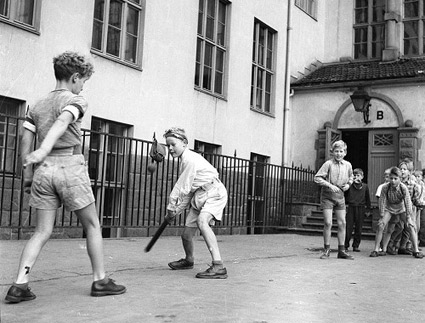I will never forget the living stations of the Cross which the Hispanic community performs at my home parish. It is always a blessing to see the devotion that the men and women display in their desire to make concrete the Passion and Death of our Lord. In many ways, their reenactments are powerful signs of how the Gospel message has been translated into every culture, time, and place. Instead of the events of salvation history being some thing of the past, they help make visible the mysterious presence of our Lord that permeates all of history.
Now, let us recall my definition of prayer: inviting God and the saints into our families. Within this definition, practices such as dramatic plays and art all constitute acts of devotion; all are integral aspects of prayer. Prayer is not solely a private act of the intellect. For families and communities, such efforts become powerful examples of how prayer takes on a collective dimension, bringing us together as neighbors and joining us to God.
Of course, the central act of communal worship is the Mass. From this central mystery all other celebrations find their orientation and their meaning. However, the transformative power of the Eucharist extends beyond the limits of the liturgical celebration. Its rhythms must become the fabric of our daily lives. Our work within the home is to help our family to enter more deeply into the Eucharistic mystery by preparing the family for the main celebrations of the Liturgical year. Thus, community and family projects draw their life from the Mass and also help to deepen our reception of communion.
There are many great websites that can help you with this important work of formation. Art, crafts, and other tangible projects, all help children attune their heart to the promptings of the Spirit. Such activities form the children in ways that penetrate beyond the surface. These activities are not only a tool for learning, but help to make concrete the act of prayer. As we help our children to engage in their faith, we help to stir in their hearts the fire of devotion.
In our contemporary society, there can be a tendency to prefer more passive forms of entertainment such as movies and television. Although not bad in themselves, we have to be careful that our entertainment does not get translated into a consumer mentality towards our spiritual life. Faith is not just one among many different products that we consume. Rather, it must be actively engaged. Even holy programs with good messages can hurt us in the long run if we are not careful.
By actively engaging your children through arts and crafts, you help them to interact with their growing faith in ways that go beyond passive consumption. Activities in which children’s hands and bodies are put at the service of prayer form an important aspect of active engagement. Through touching, molding, and creating, children are taught how to reach out to the Divine. This engagement communicates the faith in ways that penetrate deeper than information or good ideas. Faith is about a personal relationship with God, and tangible forms of devotion help children to connect the notion of God to their daily life.
Reflection Questions
-
Does your parish have any celebrations which resemble the opening story? If so, what?
-
What is your favorite celebration of the year? What are some ways that you can make it special for your children?
-
Find one arts and crafts project from the sources listed and plan on doing it this week. How did it go?
Note: In the future this Chapter will probably contain links to websites and other resources that can help you “engage the mind and body.” If you have any suggestions, feel free to share them in the comment section. It would be greatly appreciated.














No Comment